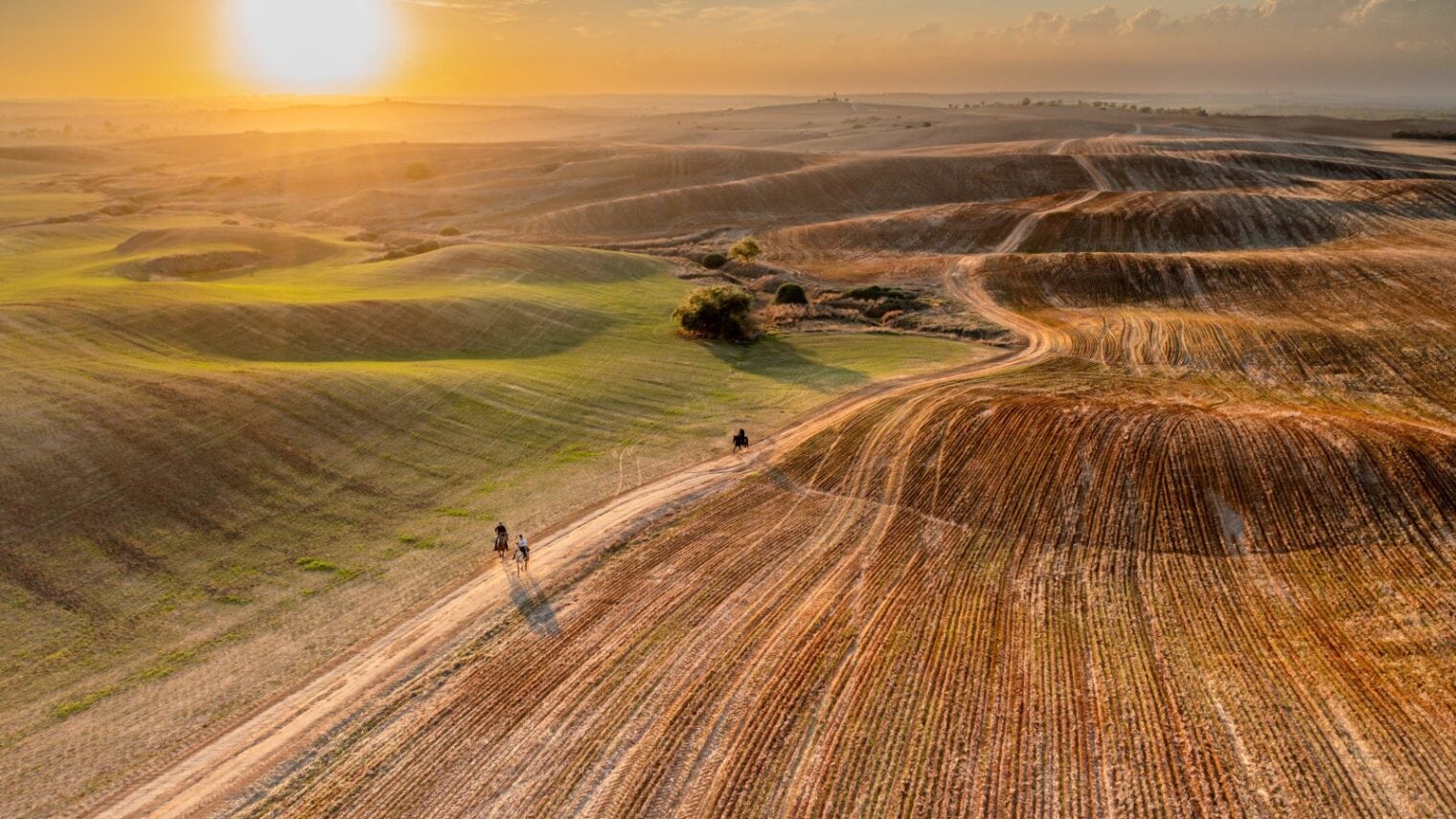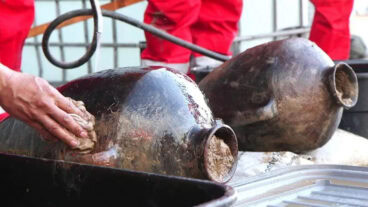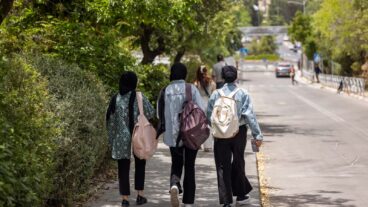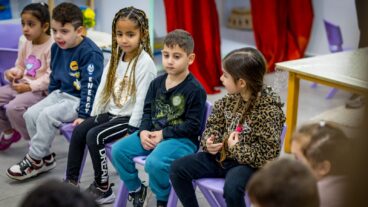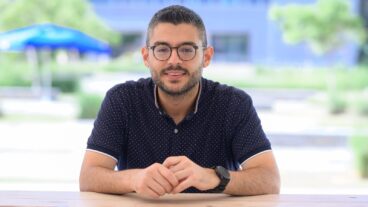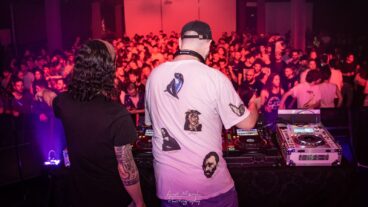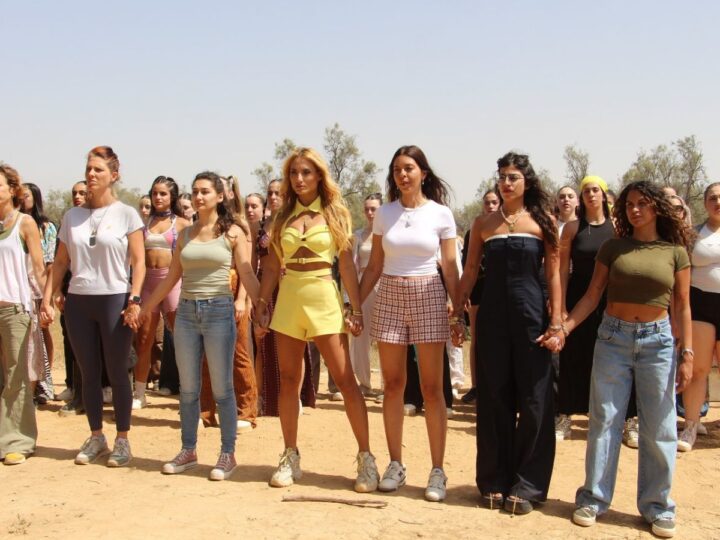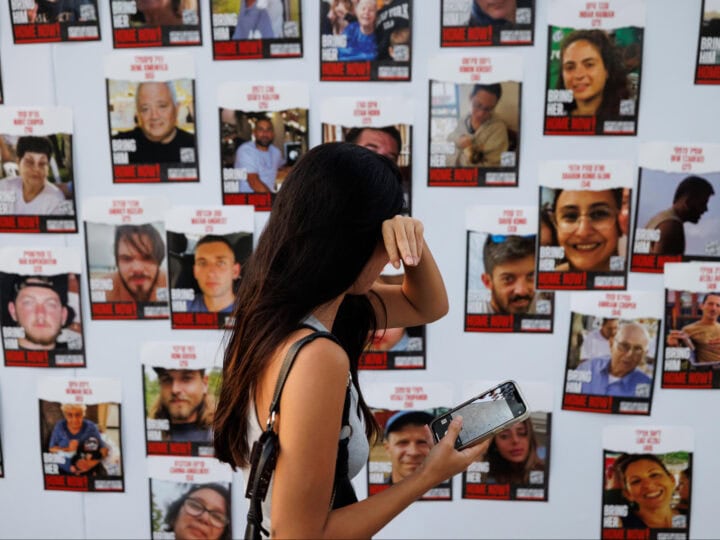In the early 1950s, a group of Israeli mothers who lost their sons in the 1948 War of Independence looked for a building to house their newly founded organization commemorating their children.
That organization would later become Yad Labanim, while the modest building that initially housed it is now The Petach Tikva Museum of Art.
This month, the museum opened a special exhibition that tells the story of the Gaza border region of the Western Negev before and after the devastating and deadly October 7 attacks by Hamas terrorists from Gaza.
Album of the South
Initiated by Prof. Dana Arieli, the “Album of the South” project presents works of 107 photographers, depicting a brief history of the Western Negev while taking into account the developments of the past eight months.
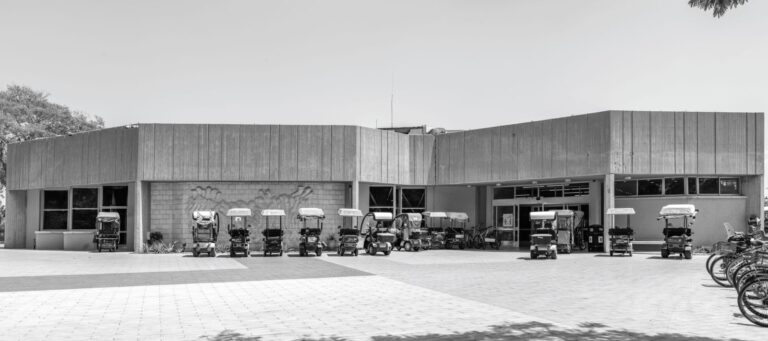
“It was my version of social action and volunteering,” she told reporters at the press opening of the exhibition.
Arieli is a photographer and researcher, as well as the dean of the faculty of design at the Holon Institute of Technology. She studies the interrelations between art and politics, primarily in totalitarian political systems.
The 60-year-old professor said she was taking photos at the memorial site of the Nazi massacre in Ukraine’s Babi Yar when she heard of the Hamas attack — the biggest single-day slaughter of Jews since the Holocaust.
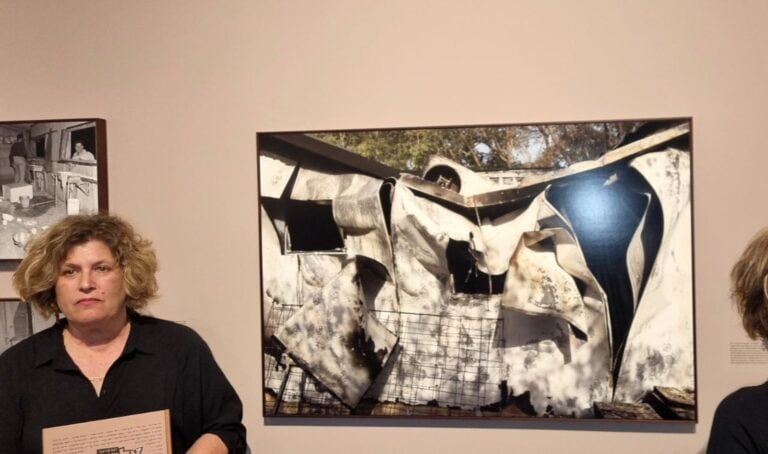
Once back in Israel, Arieli published a Facebook post full of photographs of the Western Negev, hoping to provide some comfort.
In the next 100 days, she was flooded with images of the kibbutzim in the region before and after the attacks, taken by professionals as well as ordinary people.
Some images were submitted by survivors of the October 7 attacks, who took photos along their escape route.
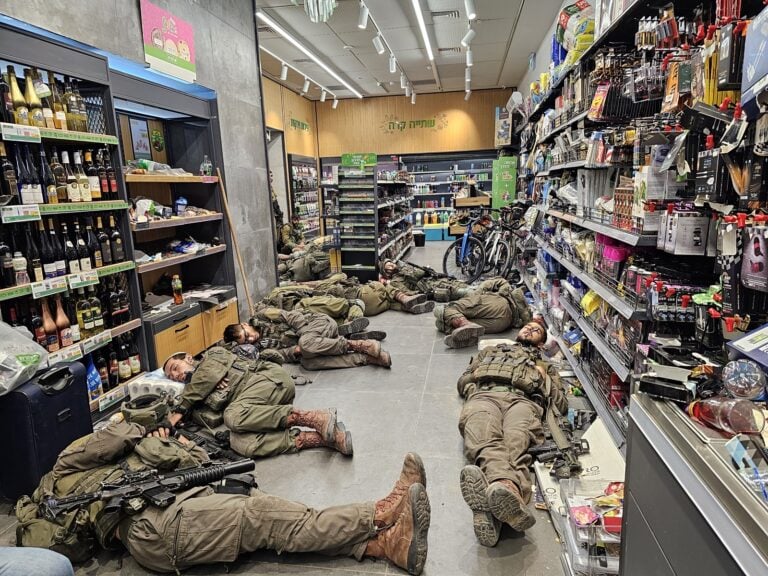
The project caught the attention of Chief Curator at Petach Tikva Museum of Art Irena Gordon. Gordon and Arieli spent months setting up the exhibition. They also published a book containing all the photographs included in the project.
Unsettling
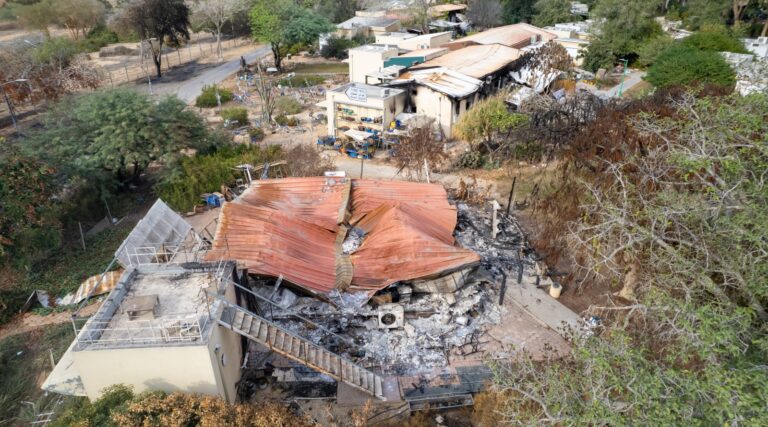
Although the curators omitted images that were overtly bloody, the juxtaposition of photographs of burned homes alongside the pre-war snaps of scenic, green fields makes an unsettling statement.
Arieli drew the attention of reporters at the press tour to an image of a ransacked, blood-stained room with sunlight beaming through the window.
“That’s the house of Rachel Edri from Ofakim,” she explained. In that house, Rachel and her husband David were held hostage for hours by five Hamas terrorists on October 7. Rachel became famous for having fed the terrorists her cookies in an effort to keep them calm.
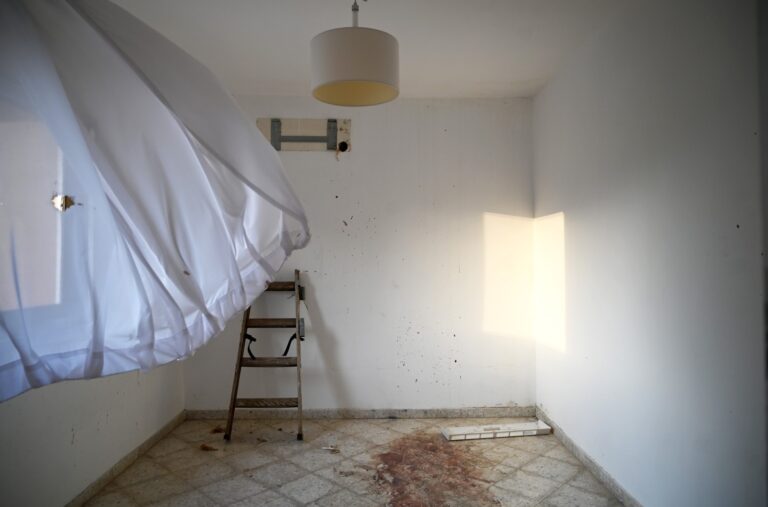
The couple survived, but David passed away months later after developing severe health problems following the ordeal.
“Fifty people were killed by terrorists on the street where the house is located,” Arieli noted.
Heart-wrenching image
Among the guests of honor of the press tour was Israeli freelance photojournalist Avishag Shaar-Yashuv.
The photo she submitted for the exhibition had graced the front page of The New York Times shortly after the attacks.
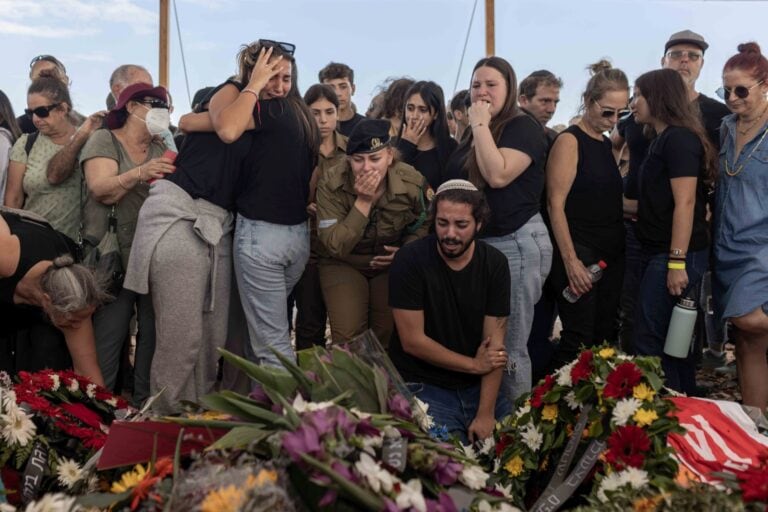
The heart-wrenching image depicts the funeral of the five members of the Kutz family, who were murdered in their home in Kibbutz Kfar Aza.
“Aviv and Livnat, the parents, were my friends. Over the holidays, we said that once they end, I’ll come for a lecture at Livnat’s studio. And now that’s a promise I won’t be able to keep,” Shaar-Yashuv told ISRAEL21c back in December.
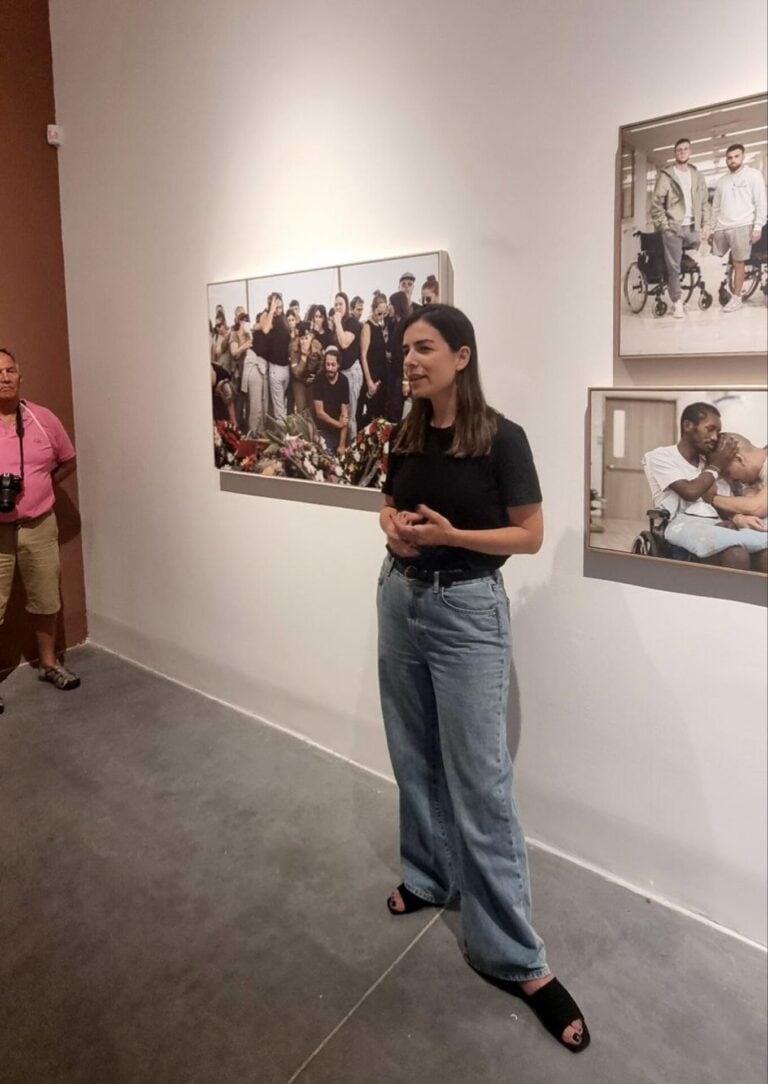
The 33-year-old photographer told reporters that she always keeps her “poker face” when taking pictures. But, at that funeral, she allowed herself to cry.
Resilience through culture
Despite the emotional impact of attending such an event, you can’t help but wonder whether the timing is right.
The war in Gaza is still ongoing and an estimated 116 of the more than 240 hostages kidnapped by Hamas on October 7 remain in captivity.
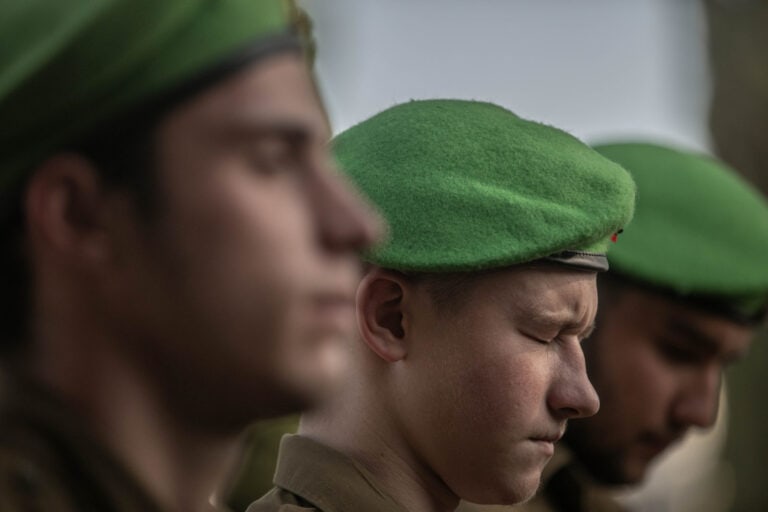
Arieli says that an exhibition of this type would be a lot less powerful if it were to be staged years from now, rather than in the moment.
“The bridge between culture and social resilience, especially during traumatic events, is as necessary as oxygen for us right now,” Arieli tells ISRAEL21c
“This exhibition is a snapshot of the situation at this moment, a step above the news channels and TikTok.”
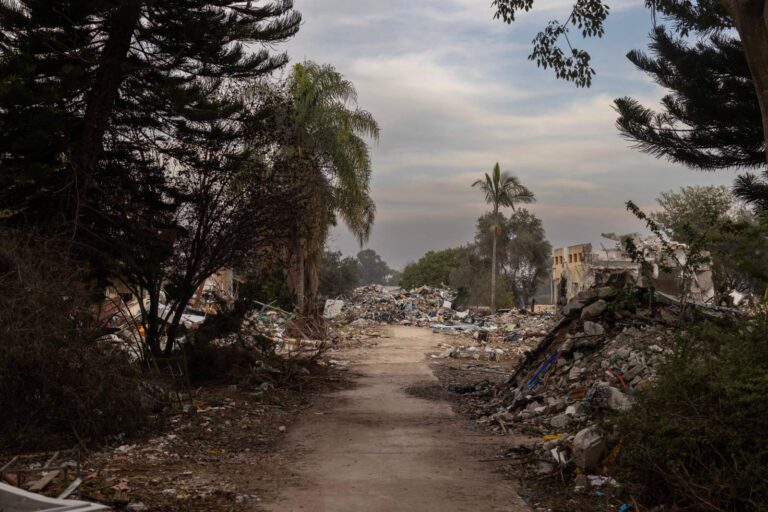
She has already started working on the “Album of the North,” referring to Israel edging closer to a war with the Lebanese terror group Hezbollah on its northern border.
“Who knows — maybe in a year’s time we’ll be here opening an exhibition about what happened to the north,” she concludes.




